Digiscoping Vultures in Extremadura, Spain
On my recent trip to Extremadura, Spain (Europe’s raptor heaven), the Griffon Vultures and Eurasian Black Vultures absolutely enthralled us with their antics, their fly-bys and just how they are in the air. We spent hours admiring them, and we must have taken many thousands of digiscoped photos of them between the two of us. To put it in context, Extremadura is a region in southwestern Spain, between Madrid and Portugal, dominated by open oak dehesas (oak savannas) and open grassland steppes.

Griffon Vulture soaring past the breeding rock face. Digiscoped with Swarovski STM80 HD, TLS800 & Canon 7D. (c) Dale Forbes
As is typical of the heavy old world vultures, they tend to sit around a bit in the morning, waiting for the day to warm up, so that they can use the thermals to raise them up in to the air before heading out over the savannas to search for food.
All of the worlds five ‘super’ vultures, the griffons, typically nest on cliffs. And for good reason; the smallest griffon, the Long-billed Griffon (Indian Vulture Gyps indicus), weighs in at 5.5-6.3kg and both the Himalayan Griffon (Gyps himalayensis) and Eurasian Griffon (Gyps fulvus) can weight up to 13kg! Now that is enormous for a flying bird that needs to cover long distances. By nesting and roosting on cliffs, the big birds can hop off and do not need to strain quite as much to get up in to the air. Mountainous regions typically also have good winds and thermals moving up through them, important for getting lift.
Eurasian Griffons on Crete (Greece) were estimated to have foraging ranges of 240km² around a breeding colony (about 8km at furthest point)(Xirouchakis & Mylonas 2005), but word on the street in western Spain is that you can pretty much see them anyway so keep your eyes up to the sky.
The one morning we headed out early to the Castillo de Monfragüe, so that we could catch the moon setting and hopefully get some nice light on the vultures as they started to take off in the morning, trying to use some of the morning winds on the mountains to get some lift. With all those vultures about, it really was a digiscoper’s dream.
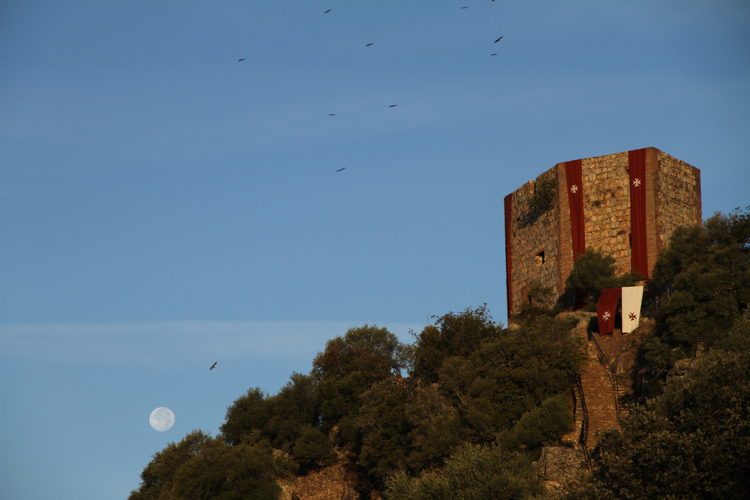
Griffon Vultures catching dawn winds over the picturesque Castillo de Monfragüe, Extremadura, Spain.
Every now and again, one of the tree-nesting Eurasian Black Vulture would come by for a visit. They have a very different flight profile and have a rather menacing face. We saw lots of Black Vultures during the week, but usually singly or in twos, and not in the larger conglomerations in which we often saw the Griffon Vultures. There were lots of sub-adults of both species about, giving a lot of hope for the species in the region.
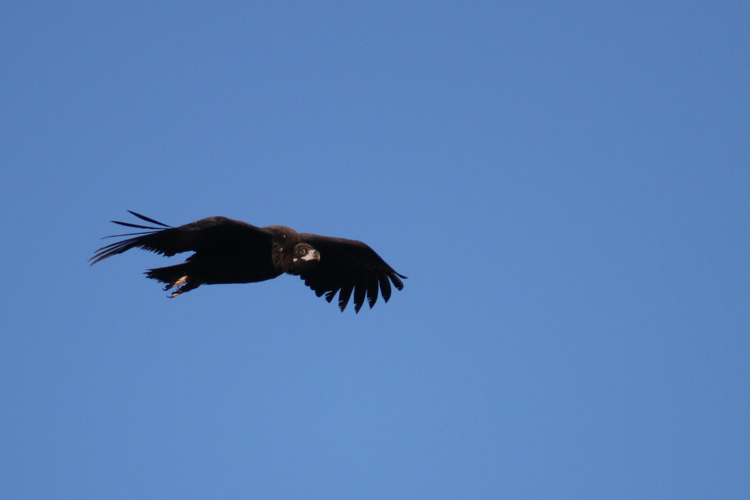
Eurasian Black Vulture digiscoped with a Swarovski STM80 HD spotting scope, TLS800 & Canon 7D. Dale Forbes
One of the somewhat unexpected things that the vultures would do, is that as they cruised past us, they would look across at us and really stare. They really were staring. At the very least they seemed to be studying us very carefully. Which made for hundreds of photos like the one below.
I have some photos of Stonechats in great light that I also took in Extremadura, on my Alpine Birds blog.
Happy birding,
Dale Forbes

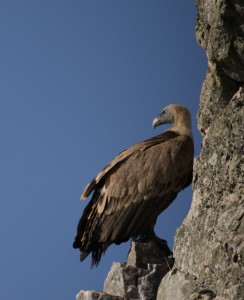
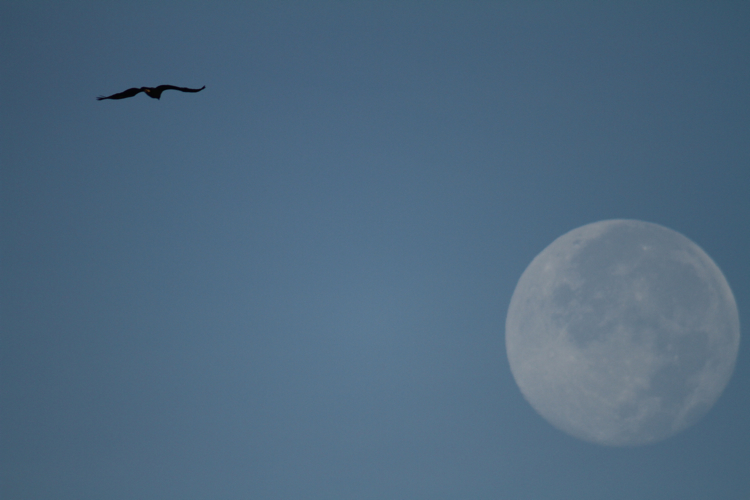
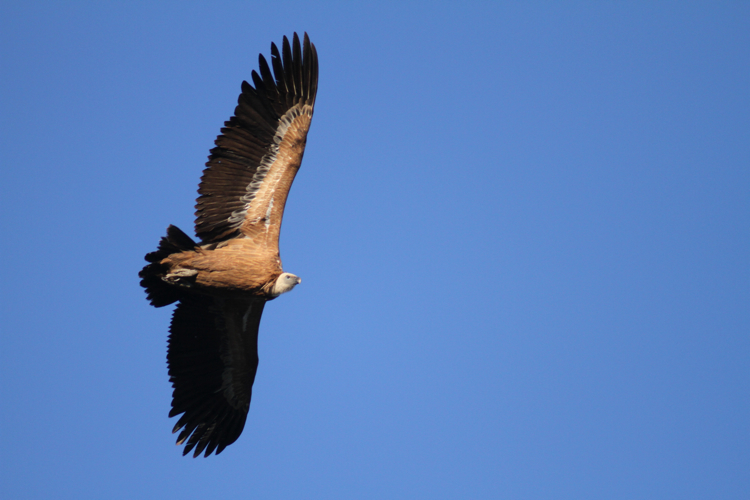
Digiscoping flying birds is hard! Great job. These birds reminds me of the days I spent at Monfragüe in March 1991 while on spring break from my year abroad in Germany. The Egyptian Vultures and Black Storks were also impressive.
It is not the sort of thing you want to try out in the beginning, but digiscoping flying birds can be incredibly rewarding. Flying vultures are about as easy as flying birds get: big, slow moving and relatively predictable. But the great thing about digiscoping is that you have incredible reach – the photos in the blog are either from full images or very slight crops and all are really nice and sharp in their full dimensions.
That’s very impressive stuff Dale. I went to Extremadura in 2008 and it was one of the best birding trips I’ve had – I won’t be sharing my own digiscoped flight shots! We stayed in Trujillo. Managed all the raptors, but strangely we just couldn’t get a Black Wheatear anywhere.
Hi Tom, ya Extramadura is really great. Nice wine, wonderful landscape, beautiful Roman cities and some great birding. We dipped on the eagles (just had a rather unsatisfying fly-by of a Spanish Imperial Eagle) and the black wheatear, but then I must admit that we were not really focussed on hunting birds, but more about finding a few cool things and digiscoping. Did you see the stonechat photos on my other blog? I really liked those and had tons of fun taking them.
Fascinating. Powerful birds. And I love the shot of the vulture checking you out.
ya, I literally have hundreds of shots like that. the whole morning they cruised up and down checking us out as they hung in the winds. awesome. powerful. moving. I have a great deal of respect for these magnificent birds…
Fascinating. Powerful birds. And I love the shot of the vulture checking you out.
Great pictures, did you see the Spanish Imperial Eagle as well? I have visited Extremadura two years a go. What a beautiful area, I will certainly go back again!
Hi Tim,
on that trip, we saw no eagles – not a single one of any species. But on a subsequent trip in February 2011 (with the EL50 launch), we saw a couple of Spanish Imperial Eagles – including one really well. Brilliant birds!
Hi Great pics but your moon looks wrong? It’s twisted too far round to be from Spains latitide???